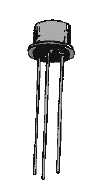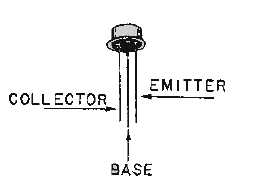2-42
SUMMARY
Now that you have completed this chapter, a short review of the more important points covered in
the chapter will follow. This review should refresh your memory of transistors, their theory of operation,
and how they are tested with an ohmmeter.
A TRANSISTOR is a three or more element solid-state device that amplifies by controlling the flow
of current carriers through its semiconductor materials.
The THREE ELEMENTS OF A TRANSISTOR are (1) the EMITTER, which gives off current
carriers, (2) the BASE, which controls the carriers, and (3) the COLLECTOR, which collects the carriers.
The two BASIC TYPES OF TRANSISTORS are the NPN and PNP. The only difference in
symbology between the two transistors is the direction of the arrow on the emitter. If the arrow points in,
it is a PNP transistor and if it points outward, it is an NPN transistor.



